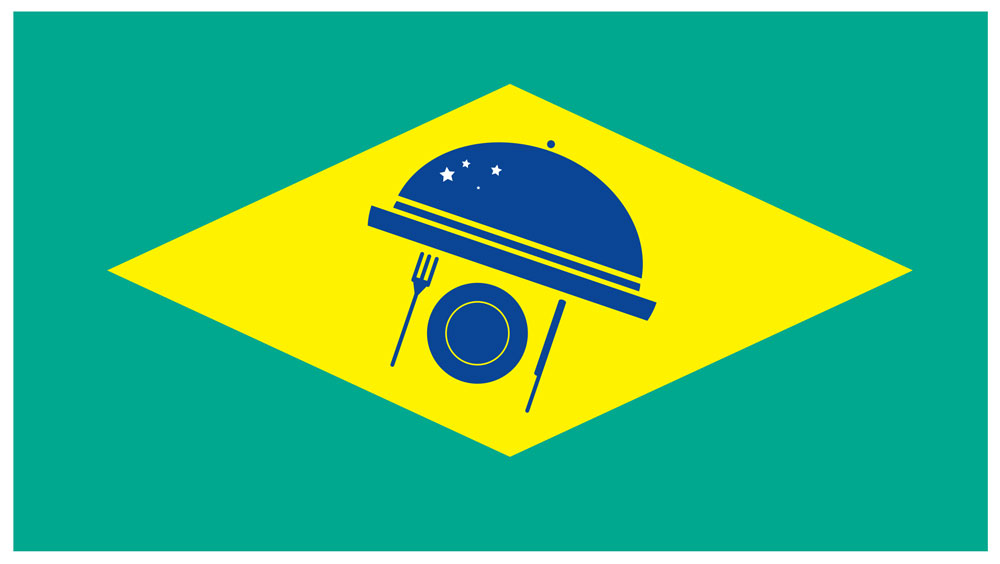Many Cultures Mingle in a Single Side Dish
Over the course of the 2014 World Cup, the Brazilian news website G1 interviewed many foreign visitors asking what surprised them most about the country. “When I got here, I asked myself why everyone put sand on their food. Eventually I tried it and realized it tasted like bacon and started eating it with everything,” said an American tourist.
Farofa, the aforementioned sandy food, is a side dish made by frying a special kind of flour with butter or oil and seasonings. While it may be peculiar to the foreign eye, it is one of the most ubiquitous recipes in Brazil. Farofa has numerous regional variations, making its way into everyday meals and special occasions alike.
The most traditional kind of farofa is made with flour extracted from mandioca, known in English as cassava, manioc or yucca. Tapioca is the most well-known byproduct of mandioca, but when this root is transformed into loose, fluffy flour and fried, it becomes one of Brazil’s important national foods, a token of the mixture and miscegenation in Brazilian culture and history.

When the Portuguese arrived in South America more than 500 years ago, they were surprised by what the Tupí-Guaraní indigenous people ate instead of bread: a white flour extracted from a root that resembled wood on the outside. What would later be called farofa is said to have been invented by accident when a member of the tribe decided to throw some of the flour on the shell of a roasted turtle he had just eaten. The shell released fat when heated, moistening the flour.
The name in fact has an African origin. According to the 2004 Enciclopedia Brasileira da Diaspora Africana (Brazilian Encyclopedia of the African Diaspora) by Nei Lopes, it derives from the word falofa, which in the quimbundo dialect referred to a mixture of flour and water or oil made in Angola. Interestingly enough, the Portuguese introduced Brazilian mandioca flour into Africa. Then, African slaves brought farofa back to Brazil.
Made from a root discovered by the indigenous people, named by the African slaves and further developed with a Portuguese influence, farofa has all the main ingredients, simmering together, representing the cultures that became what is modern Brazil. As big as the country is, its regions and states have their own cultures and cuisines, but farofa is present in all of them, served alongside other national ubiquities like rice and beans and feijoada, a Brazilian bean stew.
In the Northeast, where African-Brazilian culture planted its deepest roots, farofa is one of the foods prepared for rituals of Candomblé, a religion derived from African traditions. There, it is usually made with azeite de dendê, an amber-colored oil extracted from a palm tree known as dendezeiro. In the Central-West region, farofa is often made with banana-da-terra (plantains), or with collard greens, to be stuffed in a local fish called pacu and then roasted. In the state of Minas Gerais, known for its delicious comfort food, eggs, bacon and sausage are added to the flour. In the South, where Brazilian barbecue originated, a drier version of farofa accompanies the meat, and a scoop of potato salad.
The possibilities for farofa are endless: Antônio Houaiss, a 20th century Brazilian intellectual and lexicographer, once listed nearly a hundred possible variations of the dish. The common ingredient in all of them is mandioca, which Houaiss considered to be the only flour compatible with the recipe. Though small Brazilian markets in Chicago carry probably only one brand of the product, in Brazil there are infinite options — and some families argue that the flour of one particular city or state is superior to the rest.
Farofa is not always a side dish. Fried chicken removed from its cooking oil and placed directly into a bowl of farofa is a traditional road trip or picnic dish. Farofeiro are Brazilians who take food — entire meals that include farofa —to the beach. The word is sometimes pejorative, but the experience of being one of the farofeiros is usually a good one. On a more glamorous note, farofa also becomes the most traditional stuffing for roast chicken or turkey during the holiday season. On such occasions, it can gain more refined ingredients such as dried fruit and nuts.
Farofa is a beloved — if understated — staple of Brazilian cuisine. It may go unnoticed most days, taken for granted, or mistaken for sand. But raise the subject among Brazilians and you might hear passionate accounts of family recipes or childhood memories. For those who haven’t tried it, there is always time to discover farofa. Anyone can try a recipe at home with flour or visit one of the Brazilian restaurants in Chicago to find this traditional delicacy. The only risk is that you may start to eat it with everything.
Carolina Faller Moura is a student from Brazil in the MFA in Writing program at the School of the Art Institute of Chicago. She intends to make a farofa-stuffed turkey for Thanksgiving.







